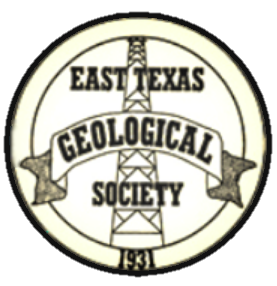APRIL 2019 LUNCHEON MEETING
Ken Wolgemuth
presents
How We Know the Age of the Earth
11:30 AM Wednesday, April 17, 2019
at the Cascades
4511 Briarwood Road
Tyler, TX 75709
Cost: $25
ABSTRACT
How We Know the Age of the Earth
The Geologic Time Scale was developed during the 19th century, as the founders of geology established the fossil sequence from oldest to youngest rocks, based on outcrop locations across Europe. Radioactivity was discovered in 1898, and within a few decades, radiometric dating of igneous rocks was developed. I will describe several ways these methods are tested and verified for reliability, and give examples. Because plate tectonics recycles rocks down into the mantle, we do not find rocks on the surface from the original formation of the earth. Clair Patterson and George Tilton developed an ingenious way of using uranium-238 and the decay product, lead-206, by compiling the uranium content of continents and the lead istotope composition of ocean sediments. In 1955, they published the first result of 4.54 billion years for the age of the Earth! This has been modified only slightly to 4.6 billion years, after these 60+ years of continued research.
With ETGS in a region of Christian values, questions arise regarding the integration of science and Christian faith, a focus of mine for a decade. A significant segment of the U.S. population has accepted the hypotheses of young earth creationism with the Earth’s age of less than 10,000 years, and that the Grand Canyon was formed by Noah’s Flood about 4,500 years ago. I will address both of these with radiocarbon dating, and a description of the history of the Grand Canyon.
BIOGRAPHY
Ken Wolgemuth
Petroleum Consultant
Tulsa, Oklahoma
Ken’s career as a petroleum geologist started in 1978 when he joined the staff at Terra Tek laboratory in Salt Lake City. He had completed a B.S. in chemistry from Wheaton College (IL) and his Ph.D. in geochemistry from Columbia University. Just out of grad school he spent 7 years teaching at Dickinson College (PA) and as a visiting professor in Brazil. Joining Terra Tek, he applied the laboratory techniques for core analysis to formation evaluation. He moved to Tulsa in 1981 joining Amerada Hess in the formation evaluation group. For 10 years, he integrated log data and core data on oil fields wherever the company had operations. In 1994 he joined the staff of AAPG, and for 7 years guided the publication of the AAPG Bulletin and books. Since 2002, he has been teaching oil industry short courses on Integrated Reservoir Analysis for Schlumberger around the world. This is interspersed with teaching Geology for Non-geologists through the University of Tulsa’s Division of Continuing Education.
Since 2010, as an active member of Kirk of the Hills Church, he and a few other Christian geologists have developed lectures about the ancient history of the earth, in order to communicate geology to seminary students and to those in the pews. He has presented geology in more than 25 venues with lecture titles such as “Radiometric Dating — Fact or Fiction?” and “Deep Time: How We Know the Age of the Earth.” He is a co-author of the book, The Grand Canyon, Monument to an Ancient Earth – Can Noah’s Flood Explain the Grand Canyon?

